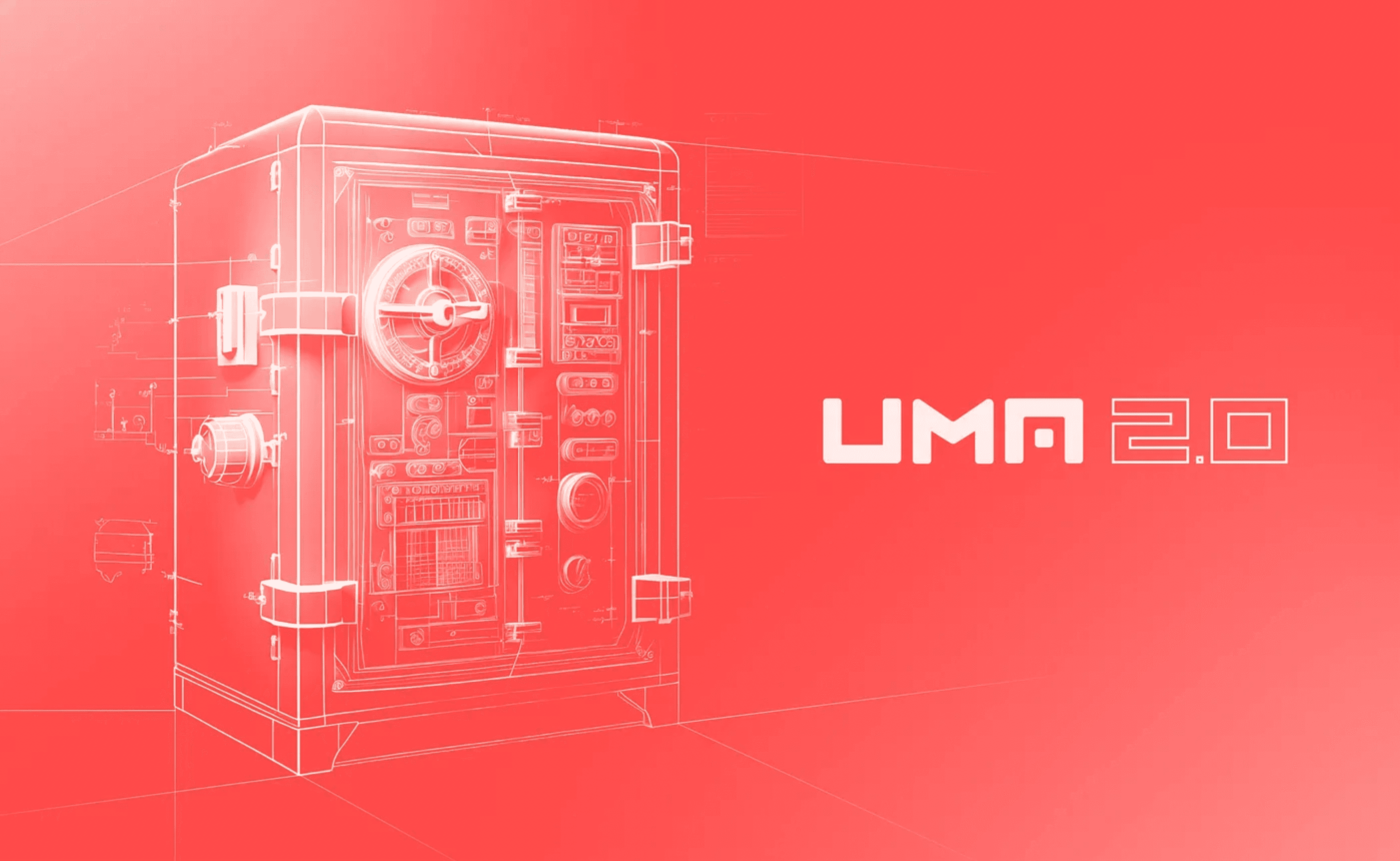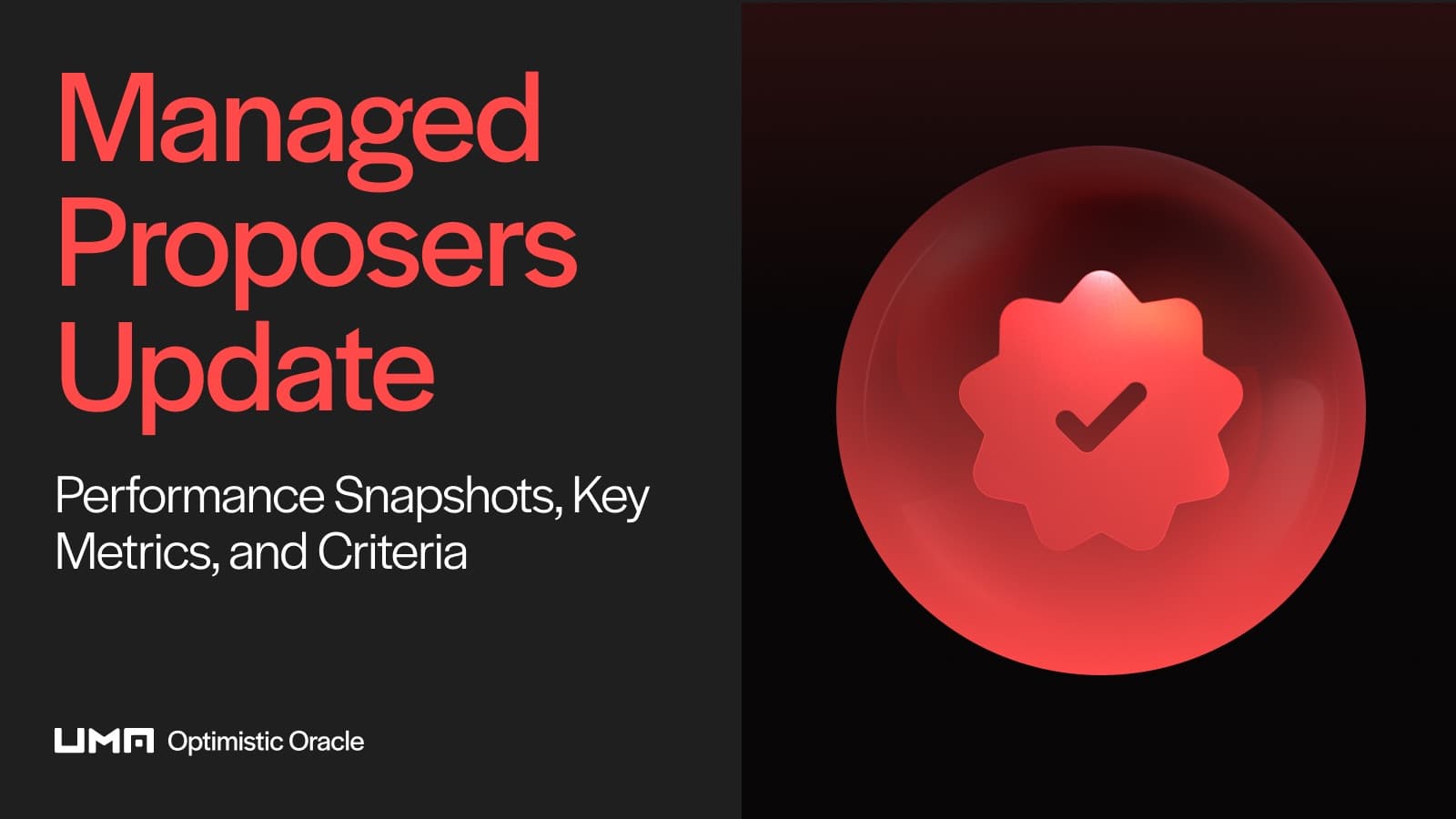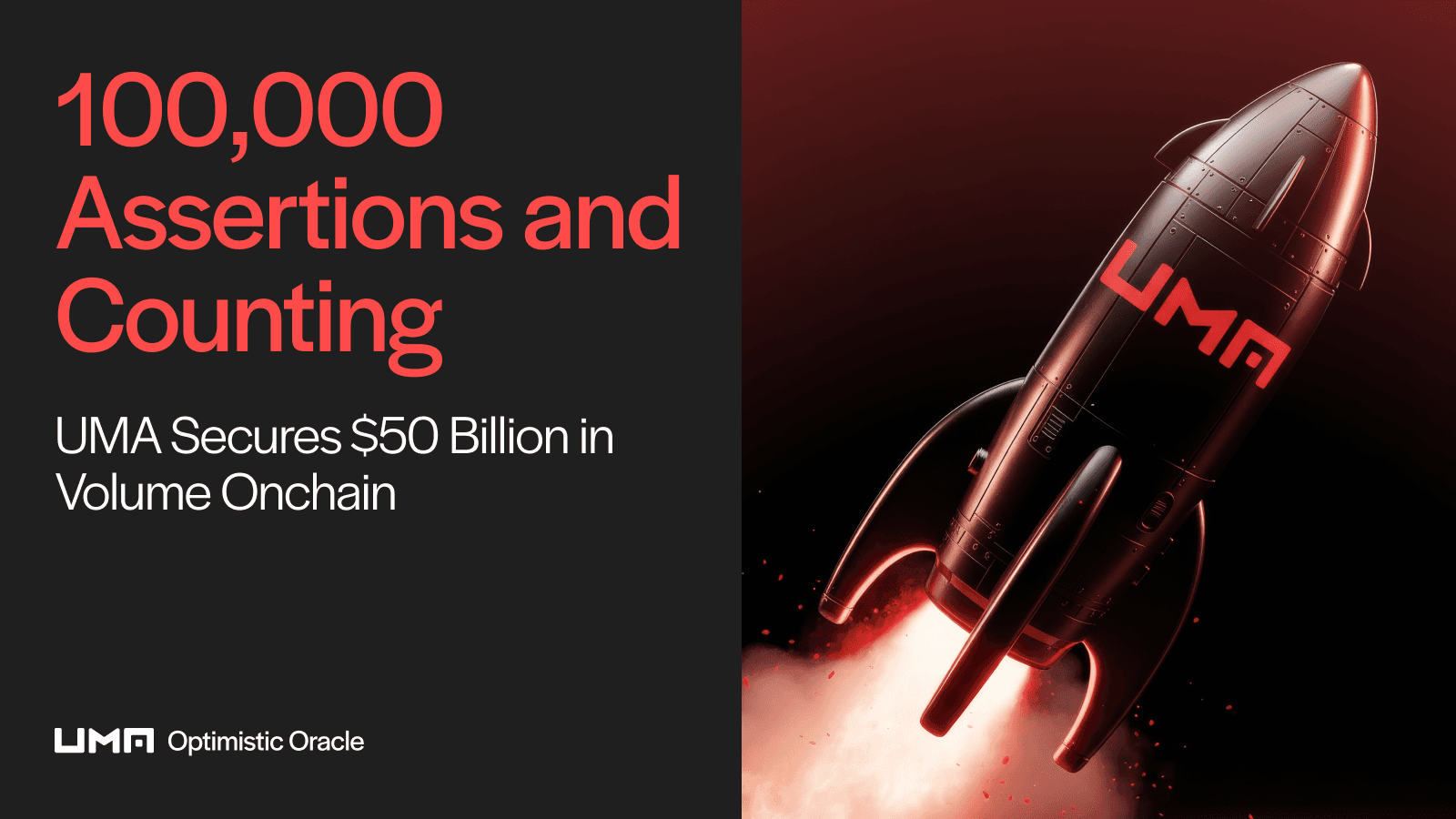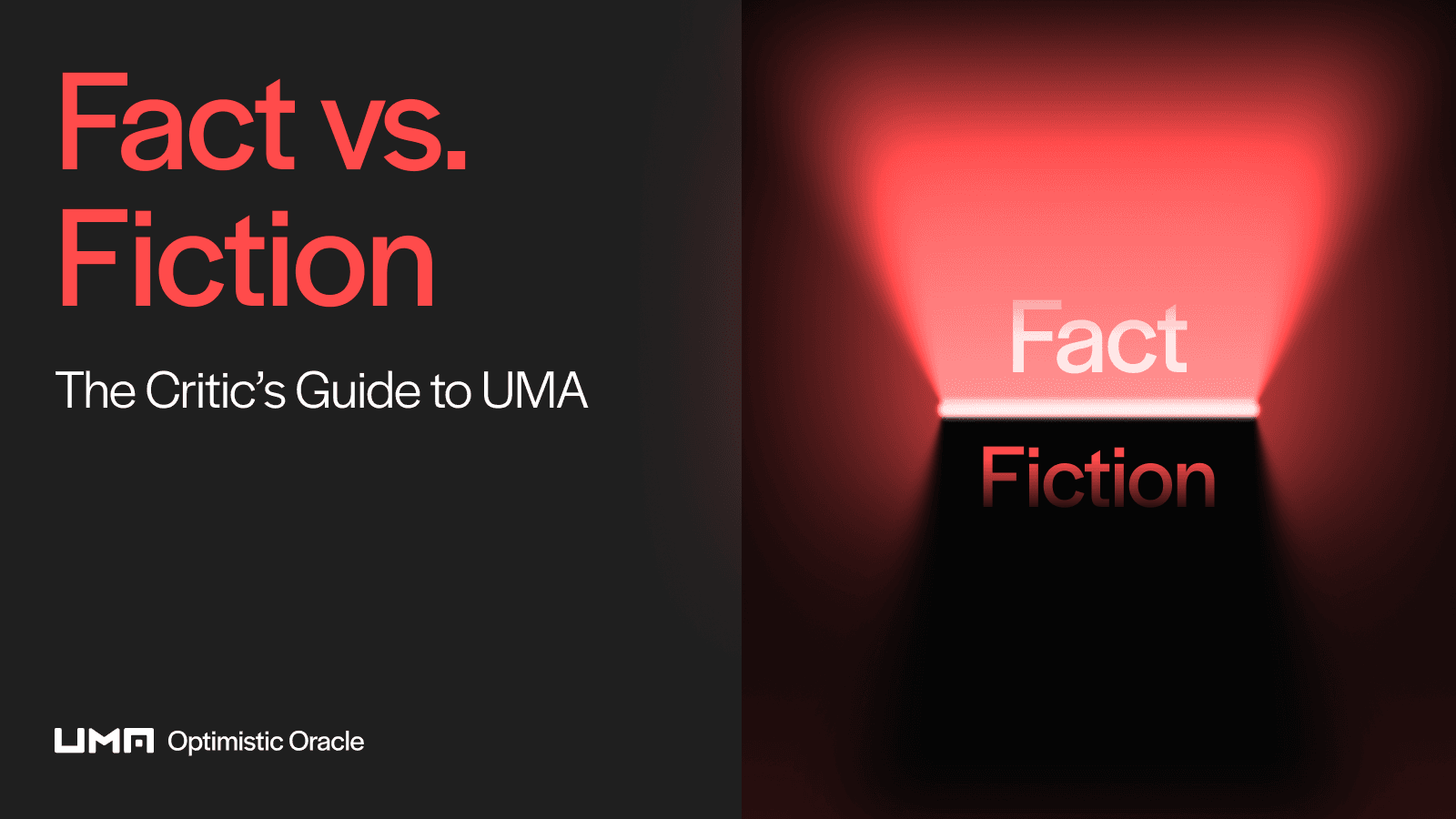UMA 2.0 and the evolution of token staking
Tldr; UMA recently launched token staking as part of its UMA 2.0 roadmap. UMA staking focuses on rewarding active network participants when they turn up to vote on disputes. While many DeFi protocols offer passive staking rewards today, UMA staking shares more similarities with Ethereum’s Proof-of-Stake model. UMA’s new model incentivizes voter participation and increases security.
Key takeaways:
Since the advent of Proof-of-Stake, token staking has played an important role in the crypto ecosystem.
While Proof-of-Stake requires active participation from validators, some more recent models offer tokens to stakers as a form of passive income.
UMA builds on early Proof-of-Stake designs and game theory to incentivize voter participation. In turn, this makes for a more secure Data Verification Mechanism.
Token staking gained popularity with the advent of Proof-of-Stake consensus, but in recent years it’s become more prevalent across many different areas of the ecosystem. The concept of staking has evolved as crypto has, with many DeFi projects using models that differ from early Proof-of-Stake designs. UMA recently rolled out a new staking model unlike any existing one today. In this feature, we discuss how staking has changed, and the role UMA will play in pushing the space forward.
Proof-of-Work vs Proof-of-Stake
Crypto started out with Bitcoin, the world’s first blockchain and pioneer of the Proof-of-Work consensus mechanism. To secure the Bitcoin network, miners put in “work” to verify transactions and receive $BTC rewards in return. Ethereum adopted a similar mechanism when it launched in 2015.
While Proof-of-Work has drawbacks, most notably concerning its heavy energy consumption, it has proven effective in securing Bitcoin for the last 14 years. But Proof-of-Stake has recently become a more popular mechanism of choice among newer blockchain networks.
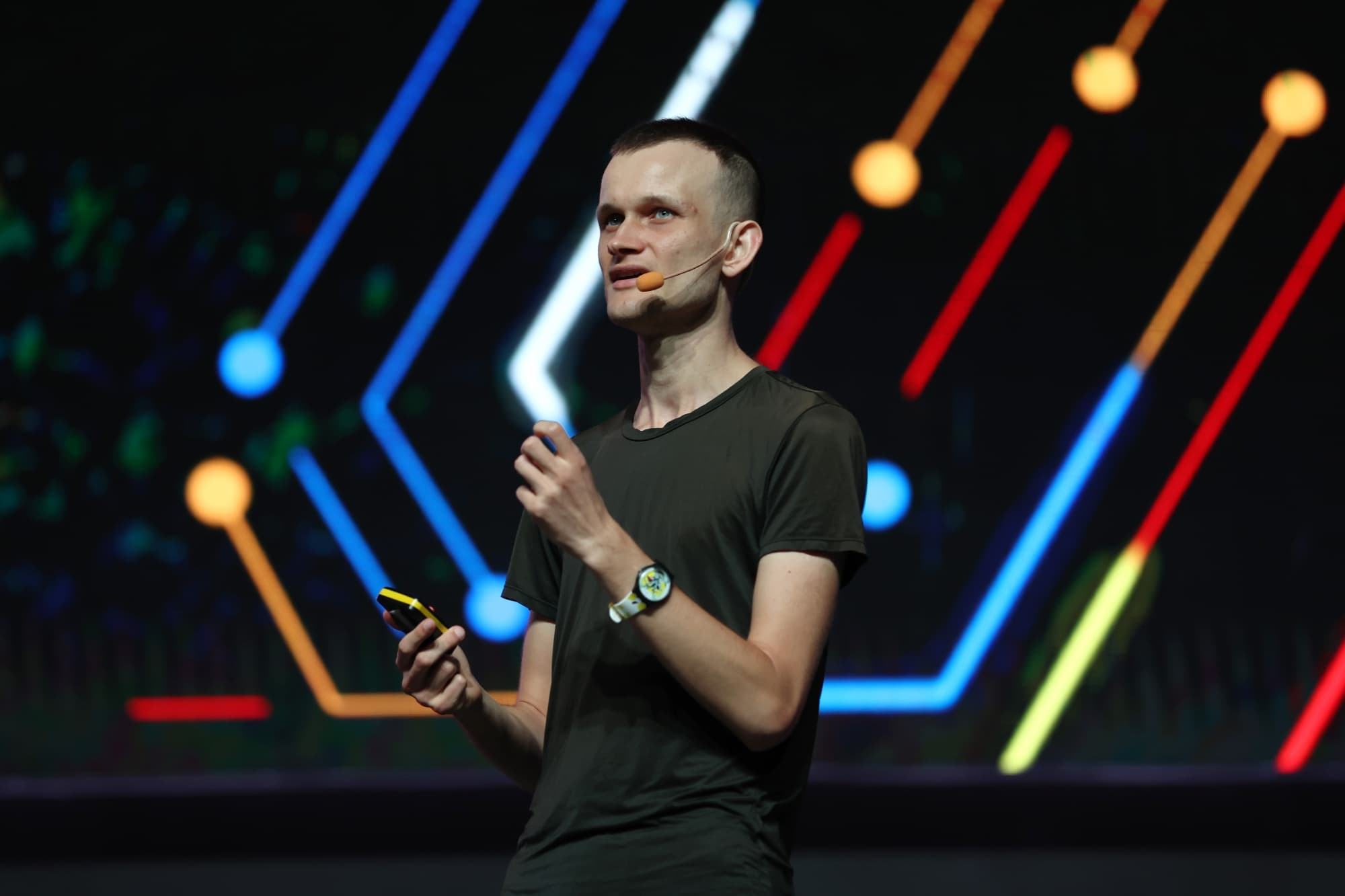
When a blockchain relies on a Proof-of-Stake mechanism, validators need to stake the blockchain’s native token to secure the network. As with Proof-of-Work, they earn a reward in return for their input. Vitalik Buterin was an early advocate for Proof-of-Stake, discussing how it could work on networks like Ethereum as early as 2014.
Ethereum successfully completed “The Merge” from Proof-of-Work to Proof-of-Stake in September 2021. Besides Bitcoin, most other major blockchain networks adopt similar Proof-of-Stake mechanisms.
Putting the work in
Although Proof-of-Work and Proof-of-Stake take different approaches, they both rely on those securing the chain to turn up and put the work in.
Miners have to source electricity to power the intensive hardware required to solve transactions. If they run out of power or their mining rig isn’t powerful enough, someone else will solve the transaction before them.
Stakers have to commit their funds and maintain hardware (albeit more lightweight than mining rigs) with a good Internet connection to validate transactions. If they fail to validate a transaction or misbehave, they risk losing some of their stake through reward redistribution.
Proof-of-Work and Proof-of-Stake do not offer “passive income” because miners and stakers only receive rewards if they help secure the network.
How staking has changed
As staking has become more widespread across the crypto ecosystem, it’s grown in popularity on the application layer. Many DeFi protocols on Ethereum and other base layer networks incorporate their own staking mechanisms today.But unlike with Ethereum or other Layer 1 blockchains, DeFi staking generally doesn’t help secure the underlying protocol. In many cases, “staking” is simply a way of generating passive yield by depositing a native asset to a protocol.
Project tokenholders are often given the option to stake their assets to earn yield. As they don’t have to secure the network or put any work in, the income is passive. These tokenholders can opt out of staking, but then their holdings get inflated away due to token emissions paid to stakers.
Such staking models have faced criticism from prominent thought leaders like Cobie in the past.
How UMA introduces a new staking model
UMA staking differs from other existing models as game theory principles determine how stakers earn rewards.
It incentivizes voters to participate and align — stakers only get rewarded if they turn up and put the work in to solve disputes correctly. If they abstain from voting or vote for a minority position in a dispute, they suffer from reward redistribution.
In this sense, UMA’s staking model can be thought of as an evolution of Ethereum staking. Similar to Ethereum staking (and Proof-of-Work mining), UMA staking is not a form of passive income.
It’s not enough for tokenholders to deposit their $UMA and forget to vote on disputes — they need to care about keeping the protocol secure. Unlike many modern staking models, UMA staking incentivizes voter participation and increases security.
UMA staking strengthens the protocol’s game theory dynamic as tokenholders need to vote correctly to receive rewards. In turn, this makes the DVM more robust and helps secure UMA.
Rewarding active participation
Although its definition has changed, staking remains a fundamental part of the crypto ecosystem. UMA’s new model introduces a design that borrows from early Proof-of-Stake mechanisms and game theoretical principles.
UMA staking will reward active participation to ensure that voters put the work in to resolve disputes. Our hope is that it will incentivize voting and make for a more secure oracle capable of serving as Web3’s decentralized truth machine.
UMA staking is now live. The emissions rate is initially set at a rate equivalent to current voter participation, which equates to around 30% APY today. This yield will vary depending on the number of tokens used for voting.
Read more about UMA staking and the path ahead for UMA 2.0 here.
Words by @dreamsofdefi
